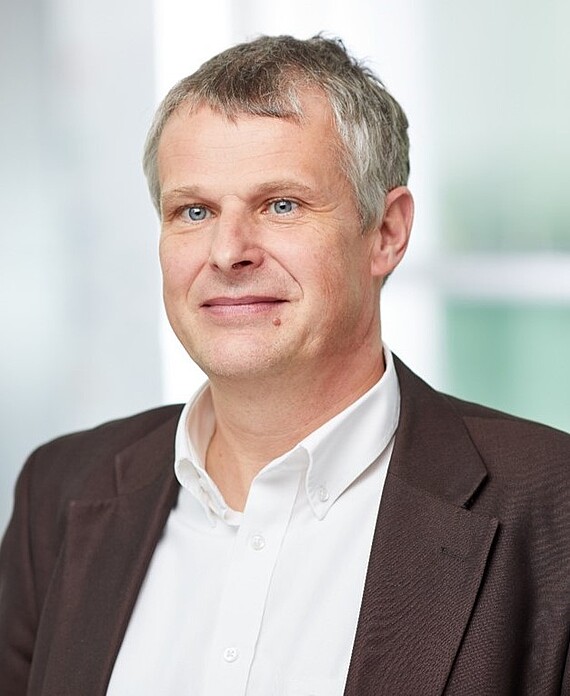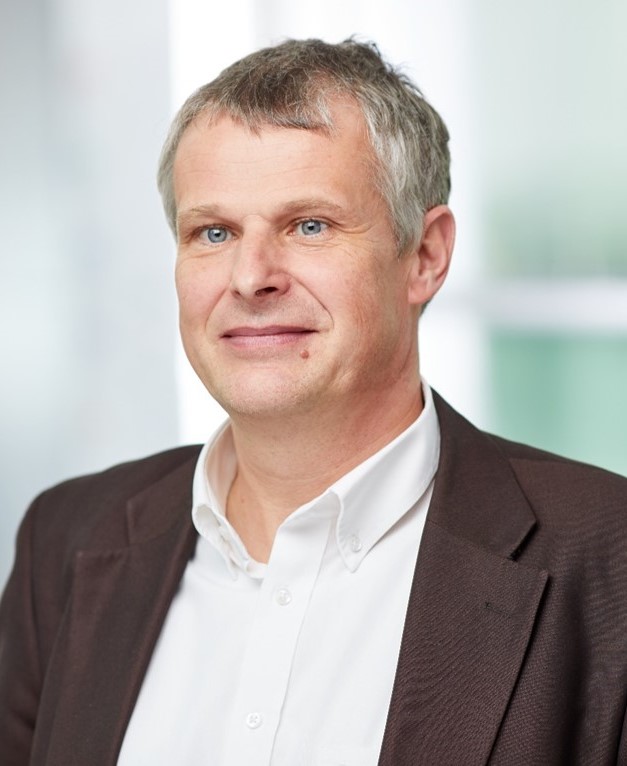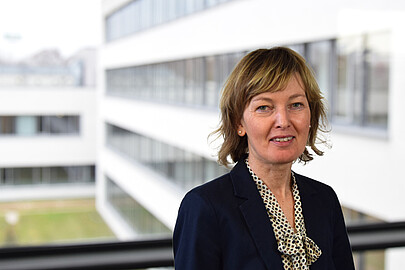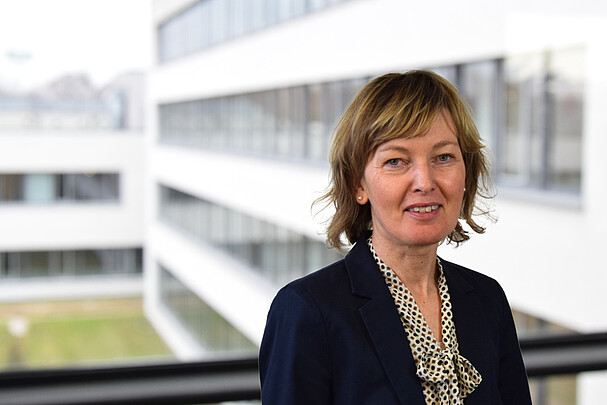Since 2001
Prof. Dr.-Ing. Ludger Overmeyer
In October 2001, Professor Overmeyer took over the management of the institute, which was renamed the Institute of Transport and Automation Technology. In May 2004, the institute moved to the newly built Hannover Centre for Production Technology (PZH), where all production engineering institutes of Leibniz Universität Hannover can conduct research and work under one roof.
In the course of the new appointment of the institute's management, a reorientation of the institute's tasks was also determined in order to adapt to the changing needs in industry and education. With the start of Prof. Overmeyer's work, the Institute for Transport and Automation Technology worked on three topics and, since 2019, an additional research area: Transport Technology, Automation Technology, Optronics and the research area Production in Space.
Within the scope of the group Transport Technology, tasks for the automation of conveyor systems, from the necessary control technology to new methods in data processing and communication technology are worked on. Another important area is the testing of conveyor belts using rotating test rigs. In December 2009, the 3,500 kN rotating test rig was built at the Institute for Transport and Automation Technology. This is the world's largest rotating test rig, with a maximum test force of 3,500 kN.
The Automation Technology group is working on issues relating to the application-specific design, prototypical implementation and integration of a wide range of sensor and identification technologies. In addition, new control concepts and components for versatile materials handling systems are developed.
In the Optronics group, the institute researches the production technology of optoelectronic systems. A wide range of structuring and printing processes are used here to apply light-conducting structures to two- and three-dimensional substrates. Research is also conducted into the integration of optoelectronic systems. This includes optical data transmission as well as the production of laser-active polymer fibers.
The research area Production in Space deals with the topic of additive manufacturing under various gravity conditions such as those prevailing on the Moon, Mars and in space. In addition to conducting its own research projects, the research group is also entrusted with the supervision of external experiments in the Einstein-Elevator. The Einstein-Elevator is a 40-meter-high, third-generation drop tower used to conduct experiments under conditions of microgravity and a high repetition rate. The Einstein-Elevator launched its first flight in October 2019, and research operations began in spring 2020.



1985 - 2001
Prof. Dr.-Ing. Manfred Hager
Prof. Hager carried out measurements on belt conveyor systems in all parts of the world, as well as development and consulting work in the conception and design of belt conveyors and of conveyor belts used in them. This has made it possible to broaden and deepen step by step the overall knowledge of all issues related to belt and belt conveyor technology. In certain applications it is desirable, not least from the point of view of environmental protection, for the material to be conveyed to be completely enclosed by the conveyor belt on the conveying section. Basic experimental and theoretical investigations have been carried out on the operating behavior of so-called pipe conveyors.
Finally, the Institute of Materials Handling also dealt with the field of processing machines for raw and residual materials. Such machines work together in complete plants with conveyors that feed them the material to be processed and convey on the final product obtained, e.g. sand or gravel after a screening process.
In addition, DIN 22110-3 was developed, a test method for conveyor belt splices that is till today used worldwide.
1935 - 1985
Prof. Dr.-Ing. Hans-Heinz Oehmen (1969 - 1985)
Prof. Dr.-Ing. Karl-Heinz Wehmeier (1968)
Prof. Dr.-Ing. Dr.-Ing. E. H. Albert Vierling (1935 - 1968)
Prof. Oehmen, Prof. Wehmeier and Prof. Vierling also constantly expanded the Institute's prominent position in the field of belt conveyor technology. In addition, the focus shifted from the hoisting equipment, which had been the main focus until then, to the field of continuous conveyors and supplemented the field of work with questions of the appropriate organization of conveying in production plants, warehouses, ports and mining operations. As a result, the Institute was renamed the "Institute for Materials Handling Technology".
The Beginnings 1901 - 1935
Prof. Dr.-Ing. Dr.-Ing. E. h. Ludwig Klein
The Institute developed from the Chair of General Mechanical Engineering, whose holder, Privy Councillor Klein, gave lectures on the following subjects from 1901:
- General mechanical engineering
- machine drawing
- Hoists and pumps
- Water-holding, conveying and blowing machines
- construction machinery
In addition to general mechanical engineering subjects, the then significant conveying engineering disciplines were already represented. In 1910, a new lecture "Conveying Systems for Bulk Goods" was introduced. This was the first time that the later work and research focus of the institute appeared. The importance of the conveying technology subjects in the overall field of mechanical engineering increased considerably in the following period, so that in 1930 the chair of Privy Councillor Klein was renamed Chair and Institute for Conveying Systems.
Contact


30823 Garbsen






















